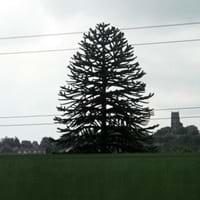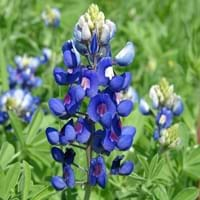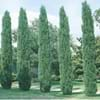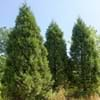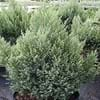Life Span
Perennial
Perennial
Type
Needled or Scaled Evergreen
Flowering Plants
Origin
Argentina, Chile
Mediterranean, North Africa, Northern America
Types
not available
Anthony Peak Lupine, Silver Bush, Garden Lupine, Spider Lupine, Adonis Lupine
Number of Varieties
Not Available
Habitat
Subtropical forests
Pine barrens, Sandy areas
USDA Hardiness Zone
7-11
3-7
Sunset Zone
H1, H2, 4, 5, 6, 7, 8, 9, 14, 15, 16, 17, 18, 19, 20, 21, 22, 23, 24
1a, 1b, 2a, 2b, 3a, 3b, 4, 5, 6, 7, 14, 15, 16, 17
Habit
Oval or Rounded
Upright/Erect
Minimum Width
Not Available
Flower Color
Green
Blue, Pink, White
Flower Color Modifier
Bicolor
Not Available
Fruit Color
Green
Not Available
Leaf Color in Spring
Green, Dark Green
Light Green
Leaf Color in Summer
Dark Green
Green
Leaf Color in Fall
Dark Green
Green
Leaf Color in Winter
Dark Green
Not Available
Leaf Shape
Needle like
Oblovate
Plant Season
Spring, Summer, Fall, Winter
Summer
Sunlight
Full Sun, Partial Sun
Full Sun, Part sun
Type of Soil
Clay, Loam, Sand
Loose, Moist
The pH of Soil
Acidic, Neutral, Alkaline
Slightly Acidic
Soil Drainage
Well drained
Well drained
Bloom Time
Not Available
Late Spring, Summer
Tolerances
Drought
Not Available
Where to Plant?
Ground, Pot
Ground
How to Plant?
Tip cutting
Seedlings
Plant Maintenance
Medium
Medium
Watering Requirements
Allow to dry out slightly between watering
Form a Soil ring to water efficiently, Keep the ground moist but not water-logged, Requires a lot of watering, Water in morning to avoid prompting diseases
In Summer
Lots of watering
Lots of watering
In Spring
Moderate
Moderate
In Winter
Average Water
Average Water
Soil pH
Acidic, Neutral, Alkaline
Slightly Acidic
Soil Type
Clay, Loam, Sand
Loose, Moist
Soil Drainage Capacity
Well drained
Well drained
Sun Exposure
Full Sun, Partial Sun
Full Sun, Part sun
Pruning
Remove damaged leaves, Remove dead branches, Remove dead leaves
Prune ocassionally
Fertilizers
All-Purpose Liquid Fertilizer
All-Purpose Liquid Fertilizer
Pests and Diseases
Anthracnose, Branch Droop, Root rot, Yellow Leaves
Aphids, Fusarium wilt, Root rot, Thripes
Plant Tolerance
Drought
Drought
Flowers
Insignificant
Yes
Flower Petal Number
Single
Single
Fragrant Bark/Stem
Yes
No
Foliage Texture
Fine
Medium
Foliage Sheen
Glossy
Matte
Attracts
Not Available
Bees
Allergy
Not Available
Abdominal pain, Asthma, Nausea, Swelling in the face, Vomiting
Aesthetic Uses
Showy Purposes, Used as Christmas tree
Showy Purposes
Beauty Benefits
Not Available
Not Available
Environmental Uses
Air purification
Air purification
Medicinal Uses
Not Available
Anthelmintic, Diuretic, Treatment of ulcers
Part of Plant Used
Whole plant
Flowers, Seeds
Other Uses
Used in Furniture, Useful for shade
Showy Purposes, Used as Ornamental plant, Used for fragrance
Used As Indoor Plant
Yes
No
Used As Outdoor Plant
Yes
Yes
Garden Design
Container, Feature Plant
Bedding Plant, Container, Feature Plant, Foundation, Rock Garden
Botanical Name
ARAUCARIA araucana
Lupinus
Common Name
Monkey Tail Tree, Chilean Pine, Pehuén
Hybrid Lupine
In Hindi
Monkey Puzzle Tree
वृक संयंत्र
In German
Chilenische Araukarie
lupine
In French
Araucaria du Chili
usine de lupin
In Spanish
araucaria o pehuén
planta de lupino
In Greek
Monkey Puzzle Tree
φυτό λούπινο
In Portuguese
Monkey Puzzle Tree
tremoço planta
In Polish
Araukaria chilijska
łubin roślin
In Latin
Monkey Puzzle Tree
Plinio herba
Phylum
Pinophyta
Magnoliophyta
Class
Pinopsida
Magnoliopsida
Family
Araucariaceae
Fabaceae
Clade
Not Available
Not Available
Tribe
Not Available
Not Available
Subfamily
Not Available
Faboideae
Number of Species
Not Available
Importance of Monkey Puzzle Tree and Lupine
Want to have the most appropriate plant for your garden? You might want to know the importance of Monkey Puzzle Tree and Lupine. Basically, these two plants vary in many aspects. Compare Monkey Puzzle Tree and Lupine as they differ in many characteristics such as their life, care, benefits, facts, etc. Every gardener must at least have the slightest clue about the plants he wants to plant in his garden. Compare their benefits, which differ in many ways like facts and uses. The medicinal use of Monkey Puzzle Tree is Not Available whereas of Lupine is Anthelmintic, Diuretic and Treatment of ulcers. Monkey Puzzle Tree has beauty benefits as follows: Not Available while Lupine has beauty benefits as follows: Not Available.
Compare Facts of Monkey Puzzle Tree vs Lupine
How to choose the best garden plant for your garden depending upon its facts? Here garden plant comparison will help you to solve this query. Compare the facts of Monkey Puzzle Tree vs Lupine and know which one to choose. As garden plants have benefits and other uses, allergy is also a major drawback of plants for some people. Allergic reactions of Monkey Puzzle Tree are Not Available whereas of Lupine have Abdominal pain, Asthma, Nausea, Swelling in the face and Vomiting respectively. Having a fruit bearing plant in your garden can be a plus point of your garden. Monkey Puzzle Tree has showy fruits and Lupine has no showy fruits. Also Monkey Puzzle Tree is not flowering and Lupine is flowering. You can compare Monkey Puzzle Tree and Lupine facts and facts of other plants too.
